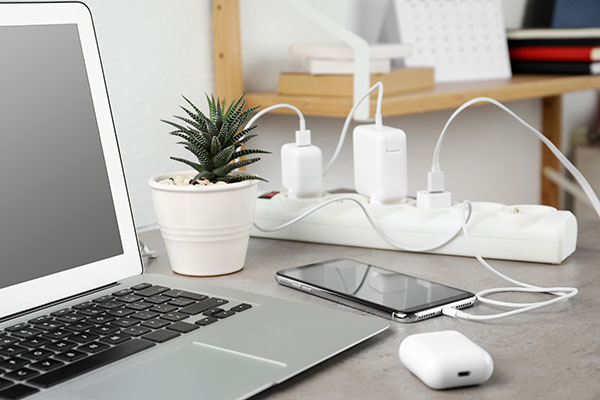What's draining your energy? Vampire Power
 Even after household appliances and electronics are turned off, many devices left plugged in continue to use power and increase your electric bill. The power used by devices while not in use is known as standby power, or “vampire power.” According to ENERGY STAR®, the average household spends $100 every year on vampire power. Devices using vampire power costs Americans $19 billion annually, according to the National Resources Defense Council. The Office of the Ohio Consumers’ Counsel, the residential utility advocate provides the following information about vampire power to help consumers save money.
Even after household appliances and electronics are turned off, many devices left plugged in continue to use power and increase your electric bill. The power used by devices while not in use is known as standby power, or “vampire power.” According to ENERGY STAR®, the average household spends $100 every year on vampire power. Devices using vampire power costs Americans $19 billion annually, according to the National Resources Defense Council. The Office of the Ohio Consumers’ Counsel, the residential utility advocate provides the following information about vampire power to help consumers save money.
Devices using vampire power
Anything that has a standby light or clock (coffee makers, microwaves, TVs) uses vampire energy which can add up to 20 percent each month to your electric bill. Many everyday appliances and remote-ready electronic devices like cable boxes, DVRs, cellphones, and video game consoles continue to use electricity even when they are not being used.
Some vampire power is necessary for functionality and convenience. Vampire power enables monitoring of refrigerator temperatures, allows the use of remote controls, and keeps digital clocks, thermostats and programs running.
On average, a home has 20-40 electronic devices using vampire power and the combined usage can be surprising. Experts indicate that in the future consumers may use more vampire power as more devices are created with microchips and are connected to the internet.
Measure vampire power
Devices vary in vampire power usage. Consumers may wonder how much they can really save by using the tips above. Kilowatt meters can be purchased to measure the power used by a device in use and in standby mode. Some public libraries may have kilowatt meters available for patrons to use.
To calculate electricity usage, plug the meter into a wall outlet and plug the device into the meter. A meter is a great tool for learning about a household’s specific power consumption and may help with deciding what tips are best to use in the home.
Consider energy efficiency
When shopping for new electronic devices and appliances, keep energy efficiency in mind. Devices with the ENERGY STAR® logo use less electricity and are energy efficient. Go to www.energystar.gov for complete list of qualified devices. Ratings for these devices change so energy efficiency is typically greater in new items.
To download: Click the folder with a down arrow icon. To print: Click the printer icon in the top right of the display.
If you need multiple copies for an organization or group, please contact a member of our outreach team.
